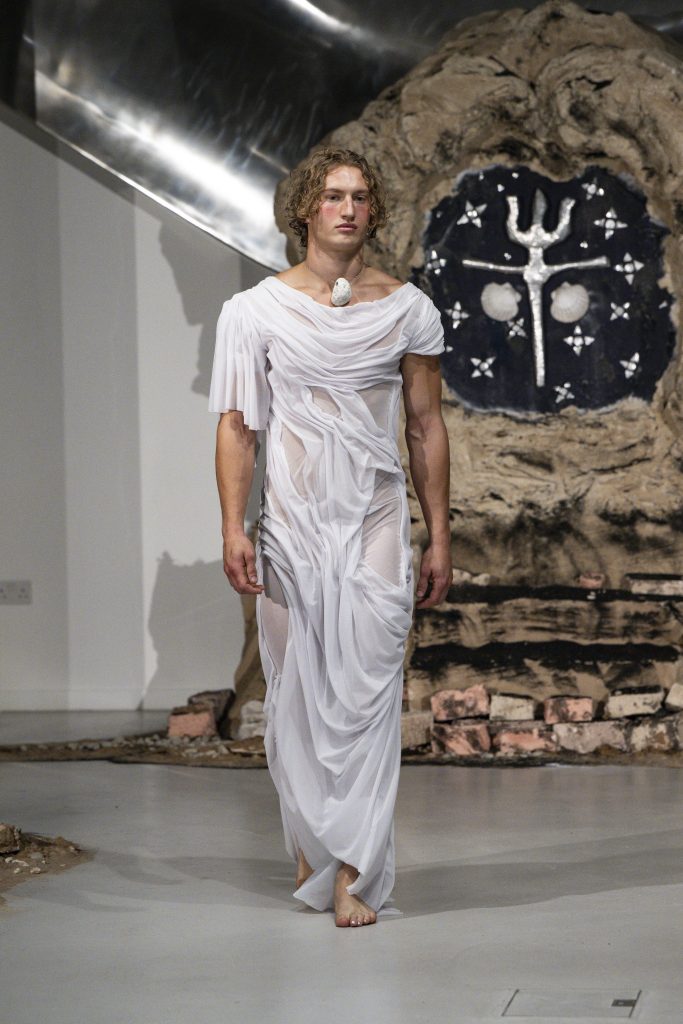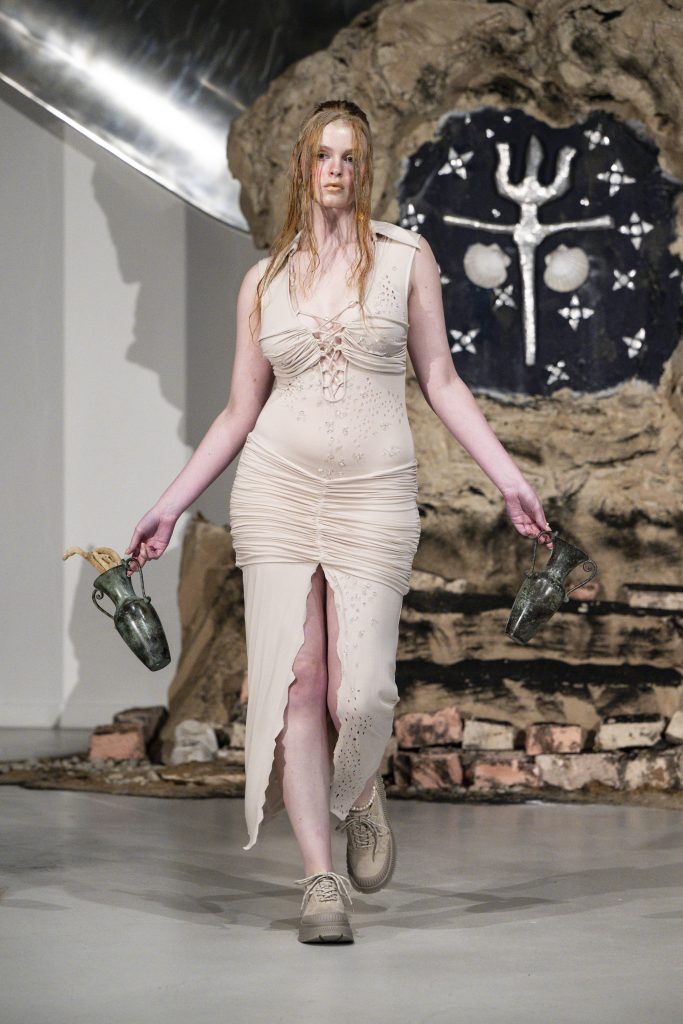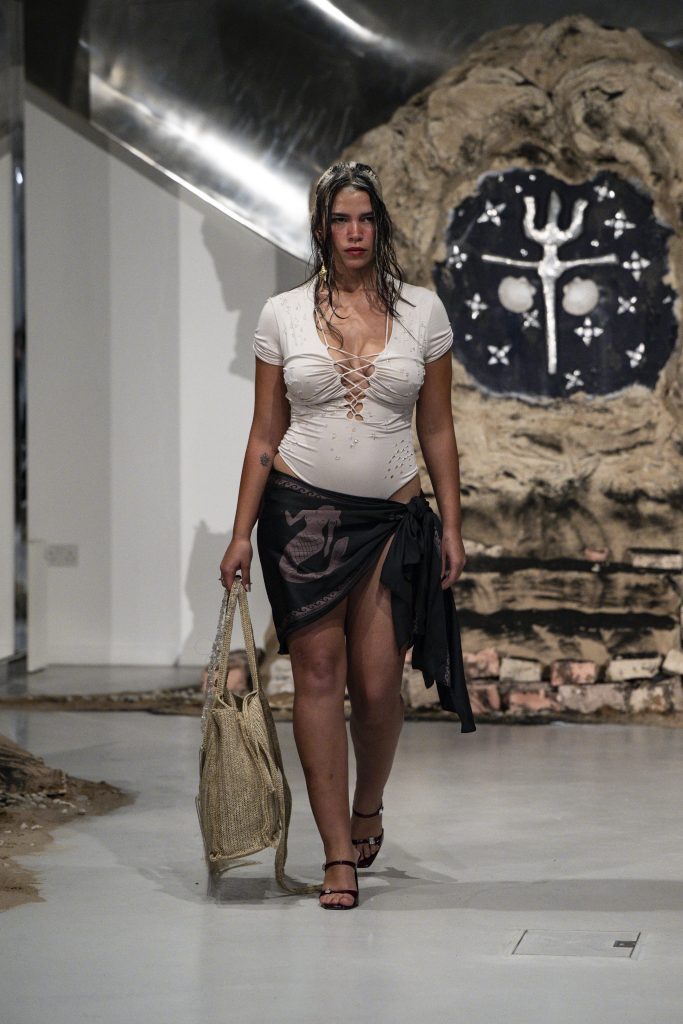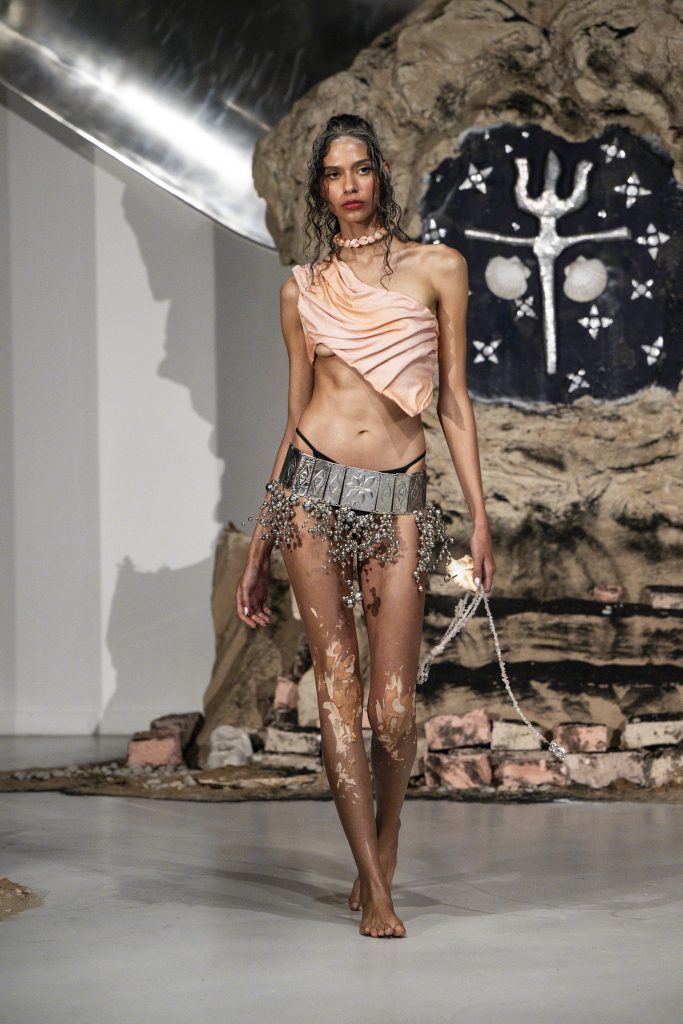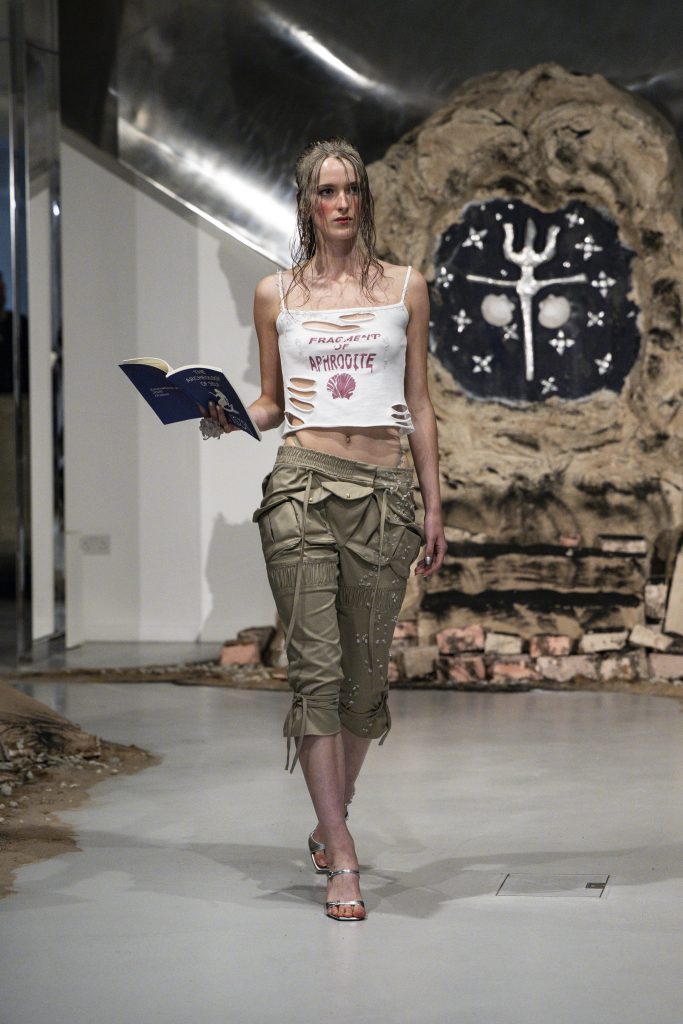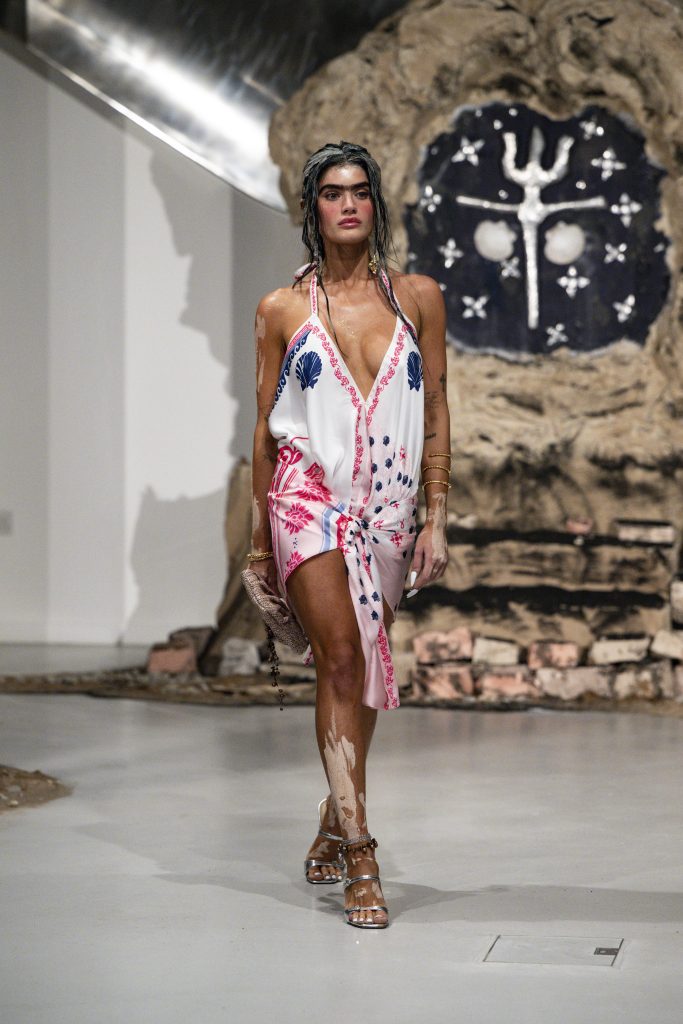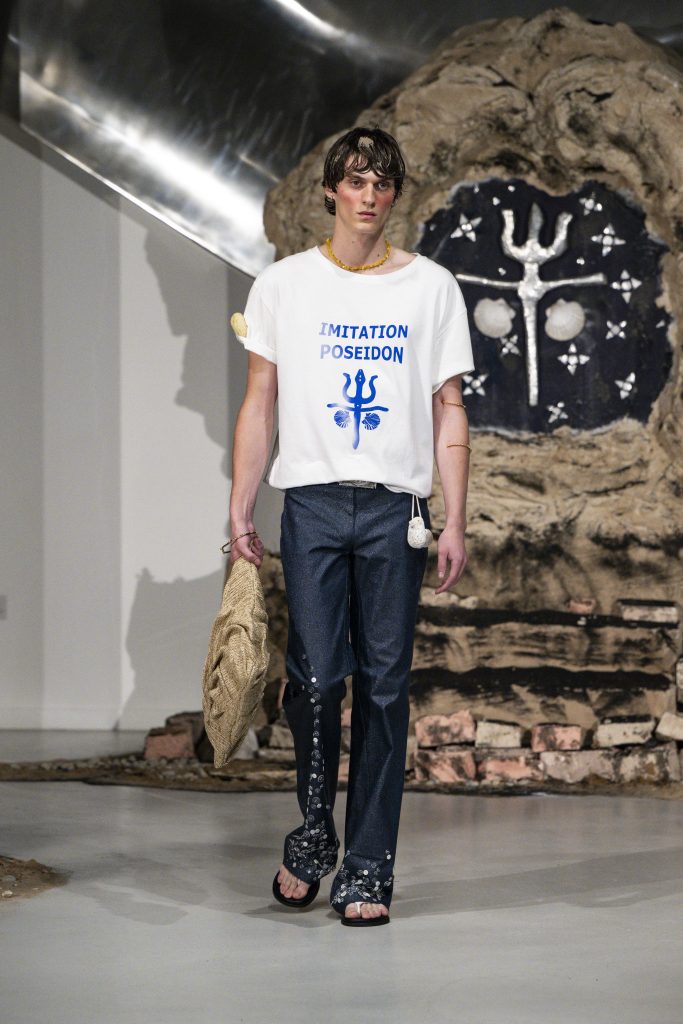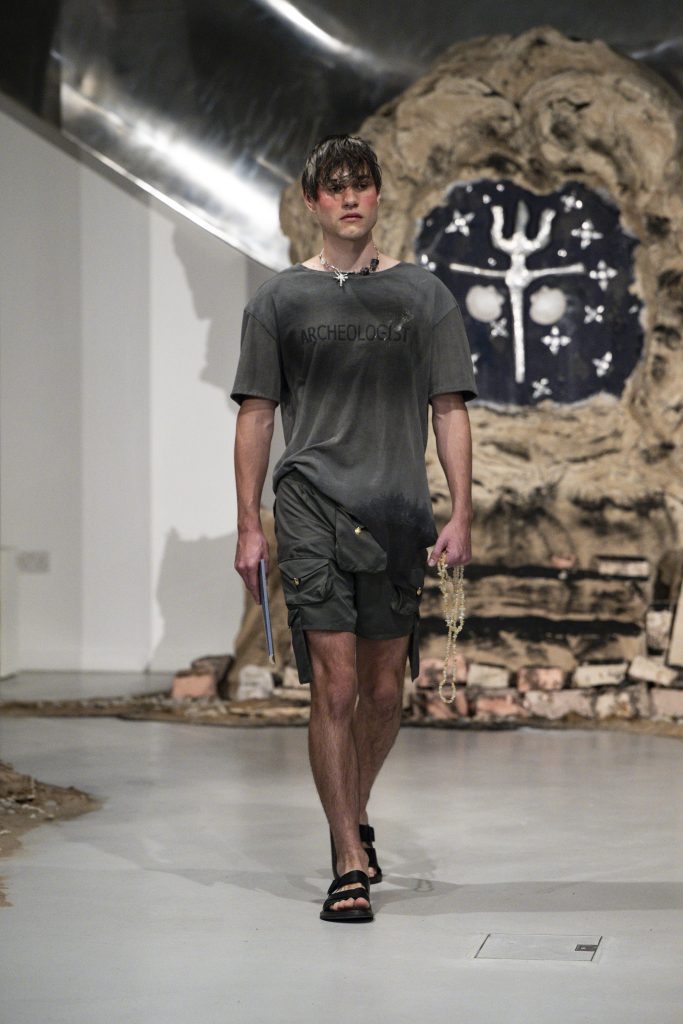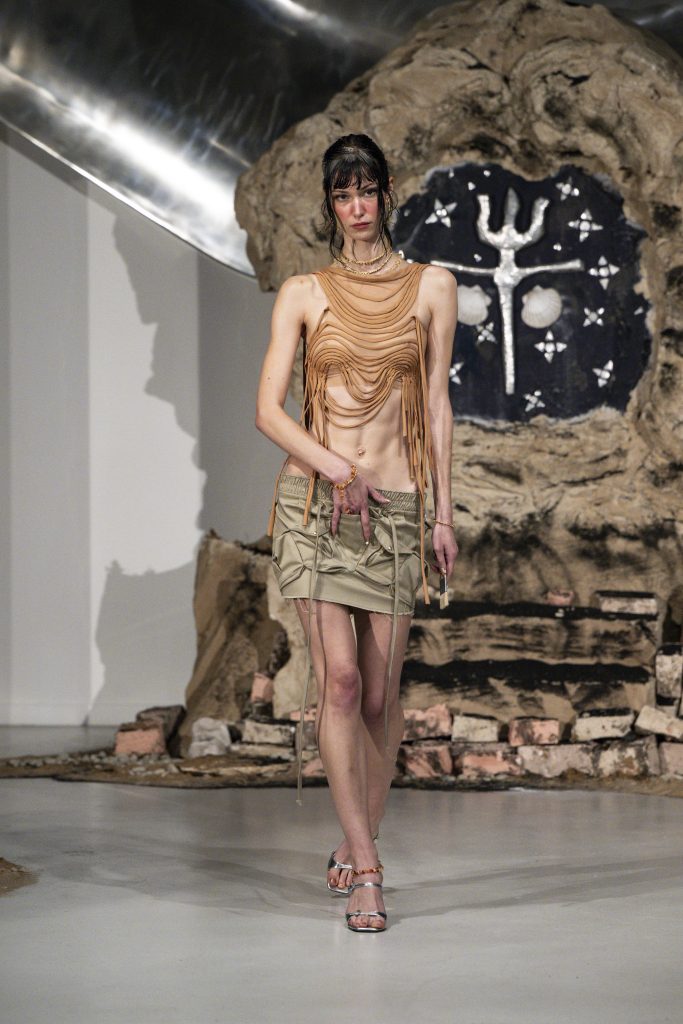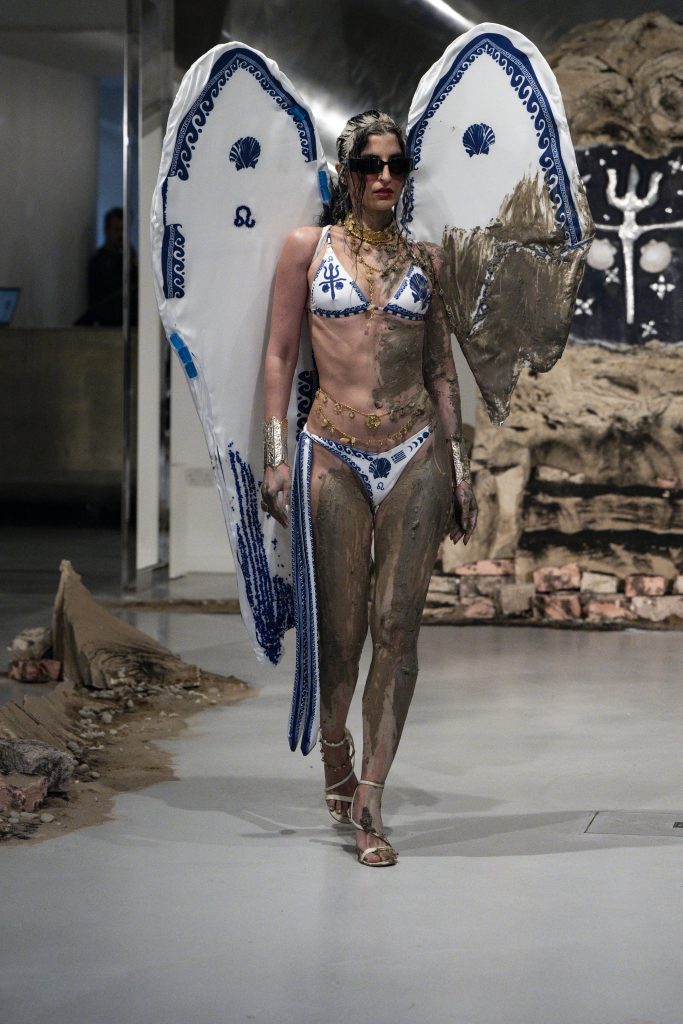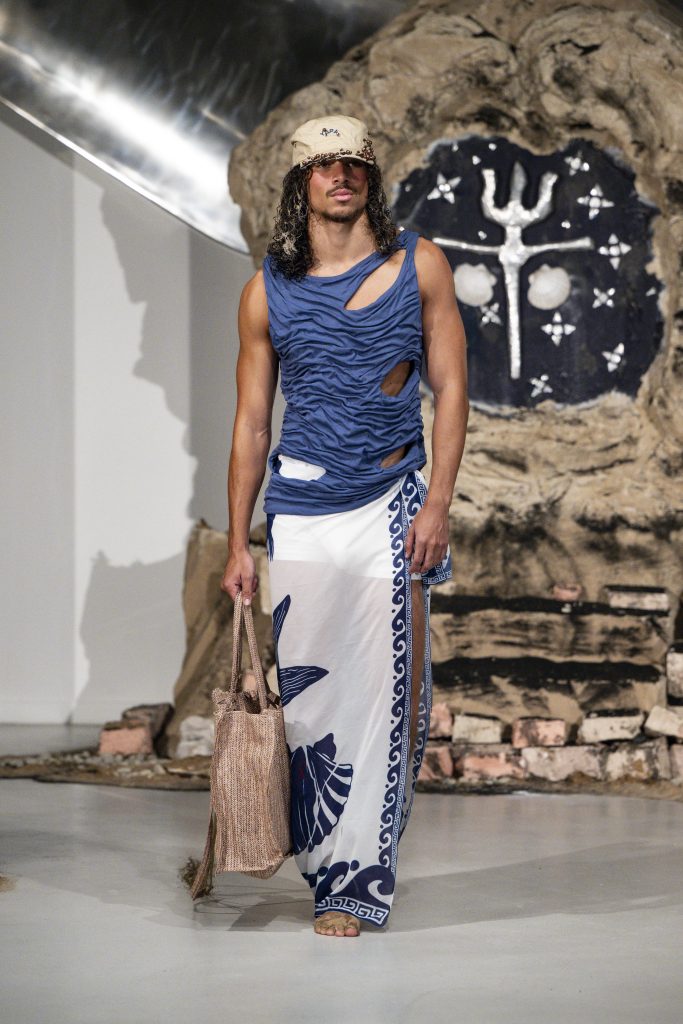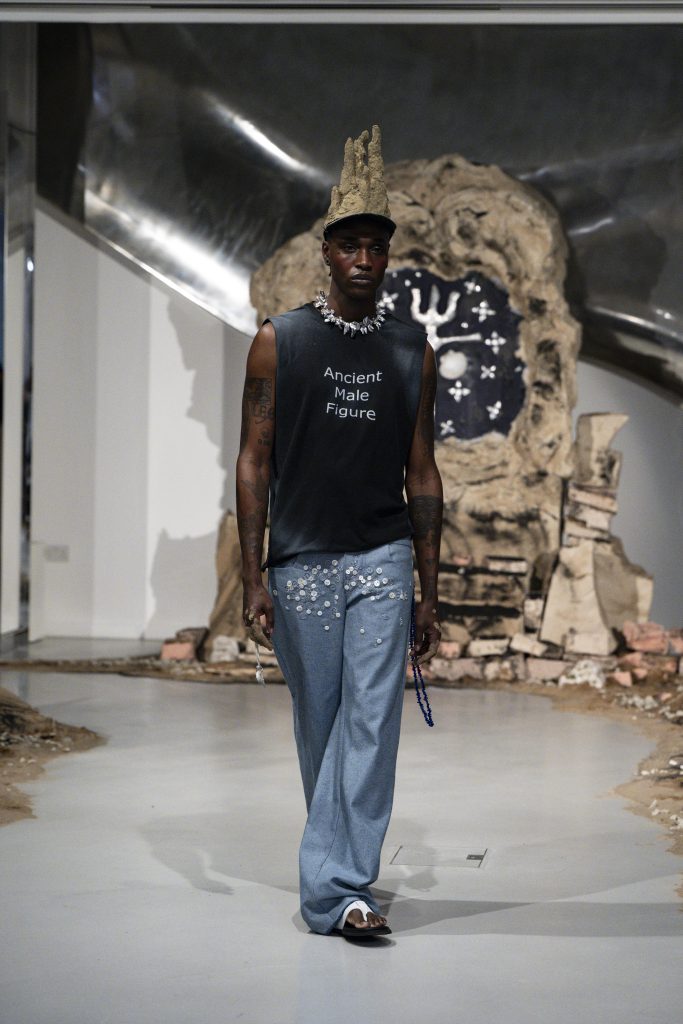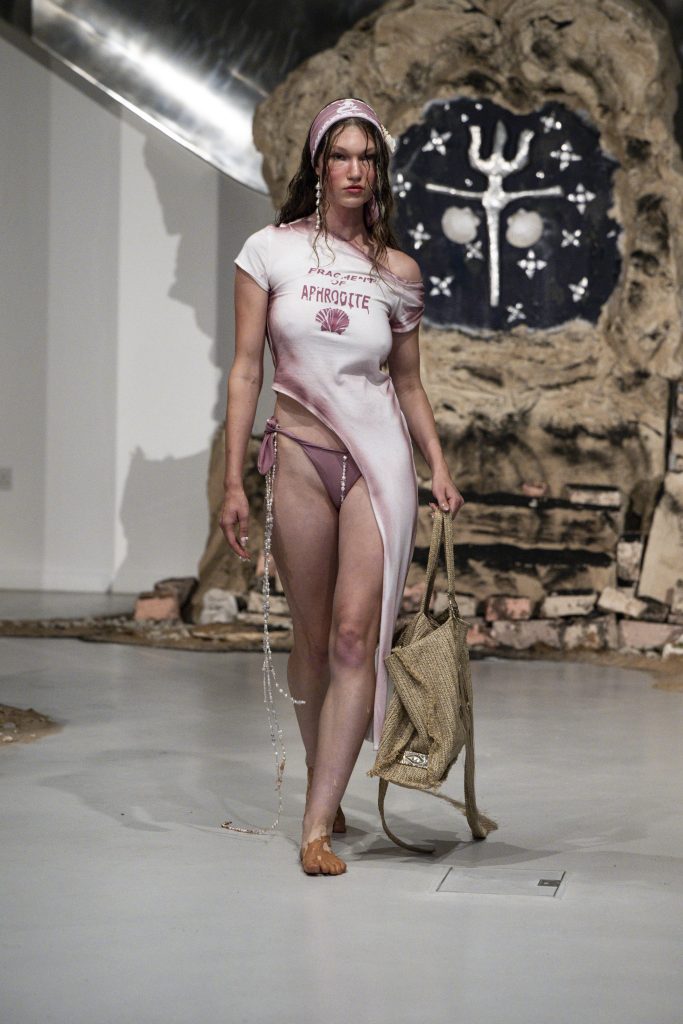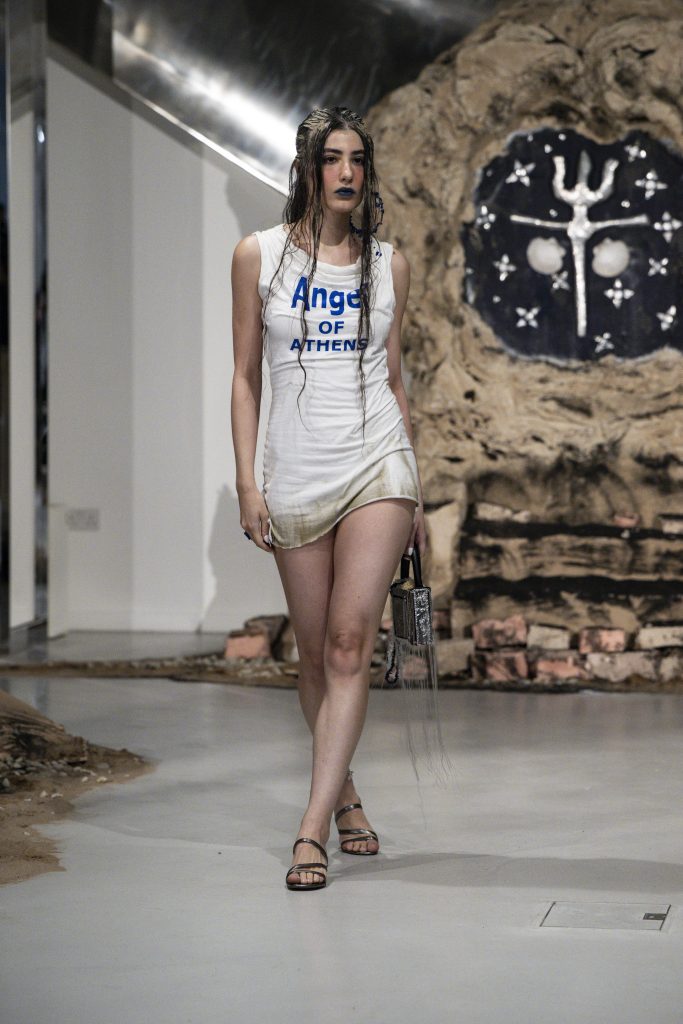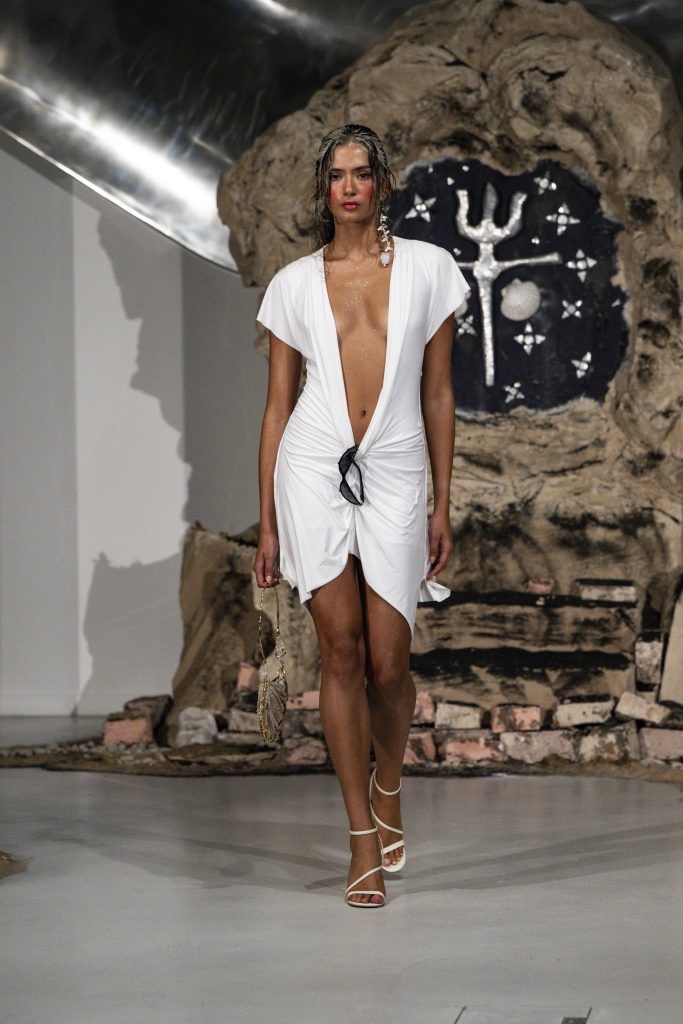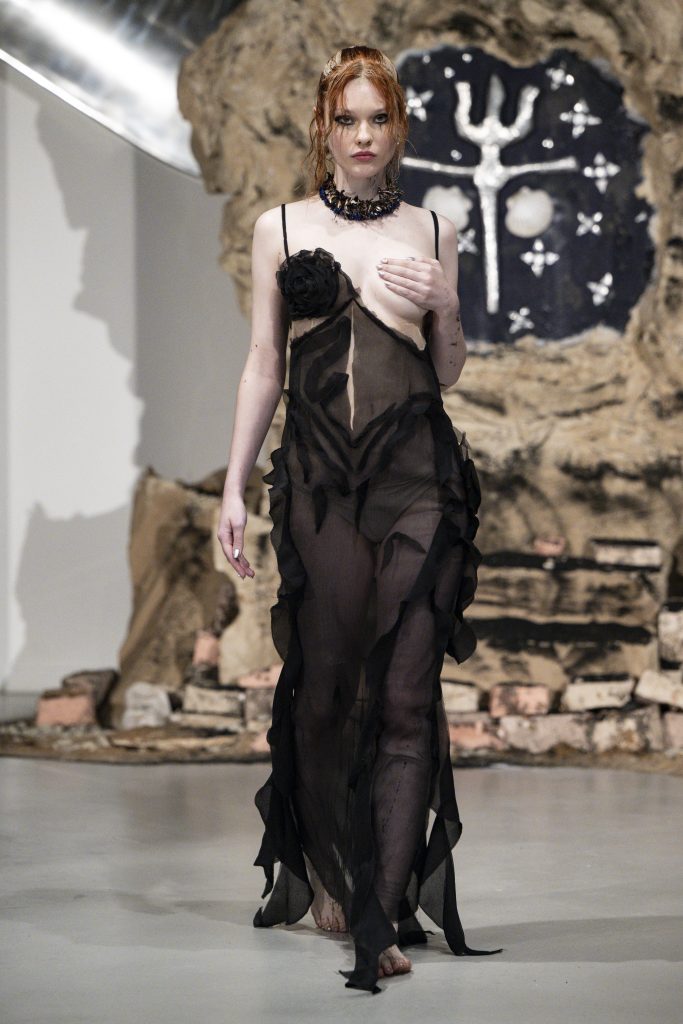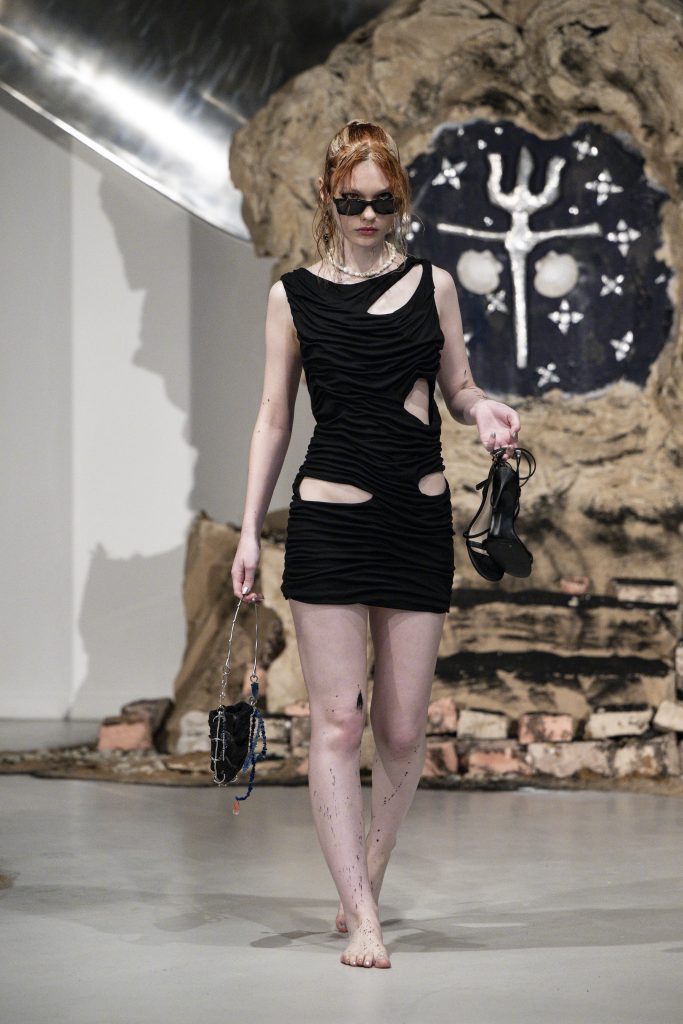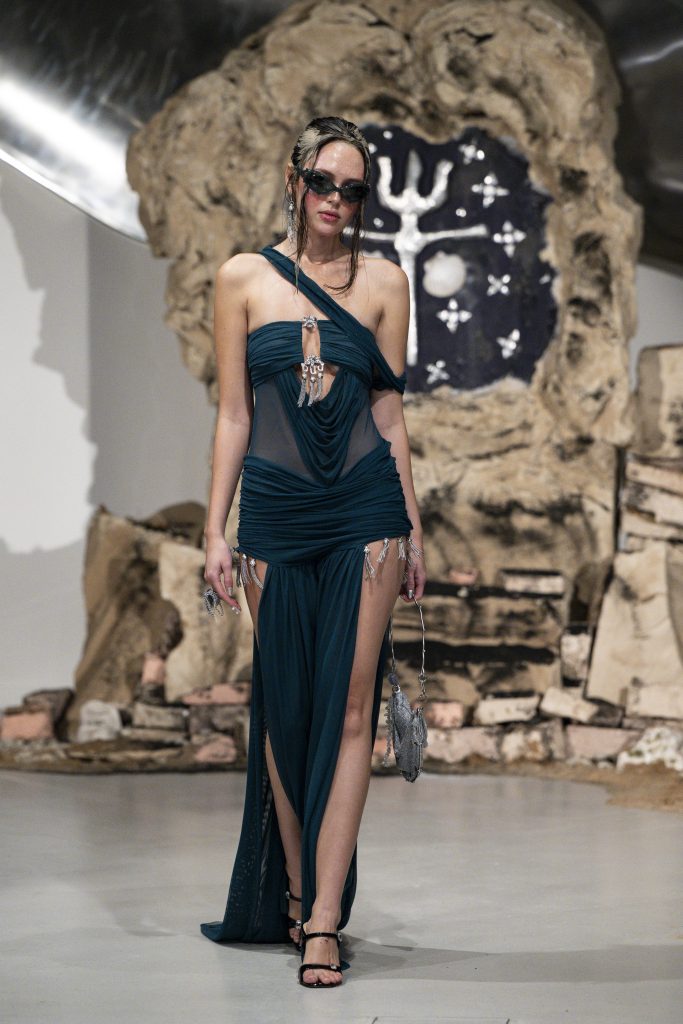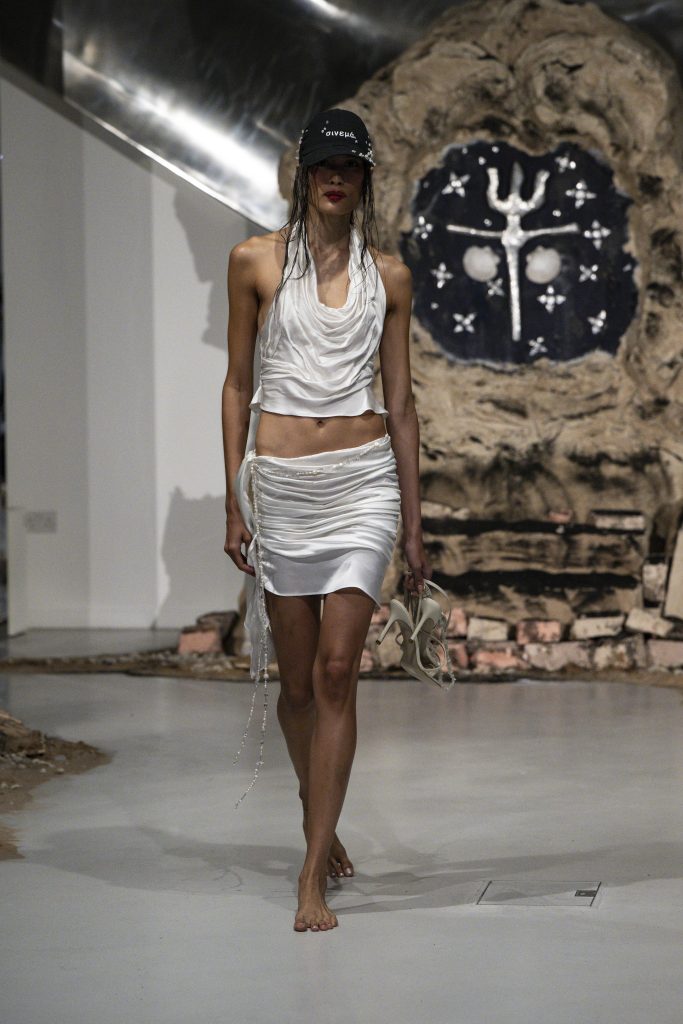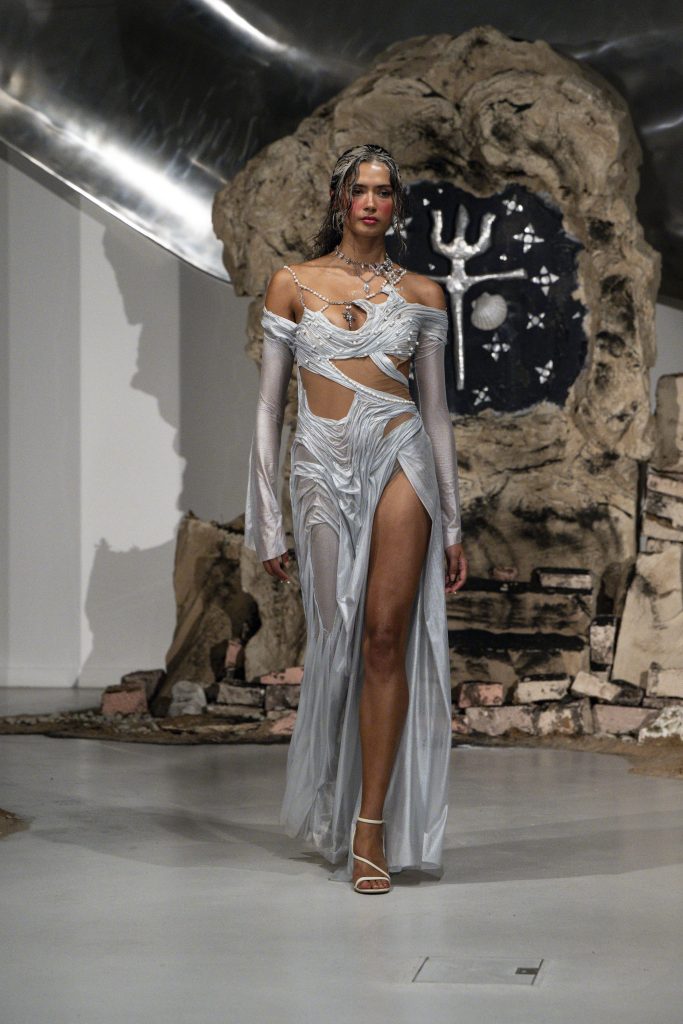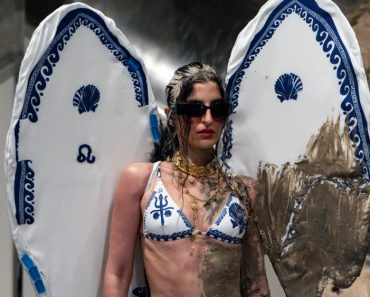As a child, Dimitra Petsa used to pray to Poseidon. Now, the ocean is her muse.
Born and raised in Athens but based in London, Petsa launched her brand, Di Petsa, in 2019. In 2021, she swiftly rose to prominence, dressing numerous celebrities, including Bella Hadid, SZA, and FKA Twigs, in her signature “wetlook”. The designer developed this secret, form-fitting drapery technique, meant to evoke the look of saturated fabric, during her Master’s program in fashion at Central Saint Martins.
Those who have never heard of Di Petsa may not fully grasp the significance of water in her work. However, those who have been following the brand know that water, in all its romanticism, spirituality, strength, and eroticism, is the label’s lifeblood.
But Petsa’s “wetlook” is not just a piece of clothing, it is a commentary rooted in ecofeminist philosophy — the way we treat the Earth is a reflection of how we treat ourselves. The “wetlook” encourages the audience and wearers alike to let go of the shame attached to sexuality.
At London Fashion Week this September, the designer displayed her new Spring/Summer 2026 collection titled “The Archaeology of Self,” searching for water deep under the Earth’s surface, marking a new expansive direction for the brand.
The Concept
The collection was a departure from some of Petsa’s signature styles, which are usually more form-fitting, semi-sheer evening silhouettes and bridalwear, and expanded the brand’s categories.
“I want someone to be able to be a Di Petsa girl all day, not just on their wedding day,” she said.
While these are sure to make their return in future collections, “The Archaeology of Self” was about exploration — going beyond. Digging into the Earth, and into the spirit, to further understand the mythology of “Di Petsa”.
But at times, to learn more about ourselves, we must return home, and that is precisely what Petsa did.
Extending even further beyond classical Greece, into the Bronze Age, Petsa sought to explore the true roots of the modern Greek culture she was raised by, and to reshape the storytelling of Greek culture that foreign archaeologists and historians have perennially dominated, especially during a period when female voices and involvement in history were often neglected.
“There were some prolific female figures then, but we’re missing a female perspective and female empowerment and, you know, there are so many female figures in history at large.”
“The Archaeology of Self” seeks to reclaim this narrative. Telling the world the stories of the influential and intellectual women who lived alongside the mainstream philosophers of antiquity, and the all-encompassing goddesses worshipped in the hints of matriarchal cultures of the land we stand on today, before it was called “Greece.”
“There is a really interesting connection between Greek culture and the past… And as a designer, it’s interesting to subvert what Greek mythology and the basis of Western culture are. As well as female sexuality and how it has been portrayed in Greek culture,” said Petsa.
Having drawn much of her inspiration from symbols of summer holidays in Greece — tourist shops, romantic escapades and a sense of magical realism — Petsa’s latest collection naturally lent itself to a novel abundance of ready-to-wear pieces.
Seaside Excavation
The first half of the show largely alluded to the greater theme that ties outerwear and excavation. Opening, was Athens-born model Nassia Matsa, wearing a blue and white swimsuit, matching angel wings, black sunglasses, and was anointed with clay. Making her way through the set of sand and ruins, she became an awakened Grecian sculpture, freshly emerged from the excavation site, heading to the beach to lie in the sun into the late hours of the day.
The mysticism of the show’s opening becomes somewhat grounded in soil, blurring the lines between reality and fantasy — a story of Earth and heaven.
Models continued to walk out wearing tops that featured classically referential slogans, such as “Ancient Male Figure” and “Fragment of Aphrodite,” as well as sarongs printed with Vitruvian waves, cargo bottoms, button embroidery that emulated water, and a new display of woven beach bags.
The “Angel of Athens” also made a return in a draped white mini dress, featuring two cutouts in the back to accommodate a pair of phantom wings, visible only to the wearer, and maintaining the mysticism that permeates the collection and the brand.
Re-Defining Female Sexuality
In a fashion era characterized by plunging necklines and cropped tops, it is easy to assume that we have become desensitized to skin exposure on the runway. However, throughout the show, Petsa’s signature command of erogenous zones maintains novelty, reinterpreting our conventional understanding of these parts of the body in fashion. Her designs are guided by the female gaze with the wearer in mind, rather than the onlooker.
“Female pleasure, especially in visual language, is, obviously, often portrayed through the male gaze. In service to please an audience. But I always tell my models and performers that the audience is here for us. We’re not here for them. They are here to create a sense of pleasure for us,” she said.
Her pieces are about fluidity on and of the body, allowing the fabric to drape and inviting the eye to wander—cutouts and sheer fabrics transform the wearer’s skin into an accessory, or rather, an extension of the fabric.
“The women who wear my designs, no matter how revealing or short, or [in line with] this idea of ‘sexy clothes’ tell me they feel something different. Not just plain sexy,” said Petsa. “For me, sexuality is something quite spiritual. I want them to feel blessed by Aphrodite.”
Celestial Storytelling
This spirituality permeates the remainder of the presentation. The show was largely inspired by the moon and its ancient personification, Selene — how the luminary conceals and reveals herself with time, fragmented and illuminated on her own volition.
Utilizing the skills she developed from her childhood immersion in the deep tradition of Greek theater and her university studies in performance, “The Archaeology of Self” is a visual representation of the story of an archaeologist. She digs and digs until finally she reaches a mythological climax.
As the show looks upwards to the sky, a series of models wrapped in black, teal, white and cream make their way through the venue. Behind them is one model, draped in shining silver organza, as if wrapped in metallic seaweed, beaded with pearls.
Finally, washing ashore and stepping into the moonlight is Brazilian model Ana Portela in the seashell gown, with strings of freshwater pearls and yellow quartz crystals hanging from her wrists and neck, as if she were Selene herself. The culmination of a mystical catharsis, she is what the archaeologist has been searching for all along, and what she has become in the process — the final chapter of self-discovery that has always guided Petsa’s creative vision.
“The reason why we dress up, or at least why I design, is because we aspire to become an elevated version of ourselves. We’re trying to work through the malleability of our identity and who we want to become.”
But this story of self-excavation won’t be exclusive to the runway. Petsa has been working on a form-defying book that follows a similar narrative.
Set in Athens, the story follows an archaeologist on a quest to uncover female divinity at the intersection of ancient Greek religion and modern Greek Orthodoxy. And like her designs, Petsa’s writing is intuitive — some parts read like a novel, slowly unraveling into abstraction, dipping into poetry and slipping back into the traditional novel form..
“This show was also very inspired by my writings. It’s kind of like a prelude to what is coming out.”
Fluidity and magical realism are defining forces in the world of Di Petsa, and no matter how precisely onlookers understand the work that is Dimitra Petsa’s externalized inner world, there is one thing that everyone can agree on: at her core, Petsa is an artist in every sense of the word.
Through “The Archaeology of Self,” Petsa turns clothing into an act of unearthing — urging the wearer to “dig with your words, [and] dig with your hands,” toward personal divinity.


